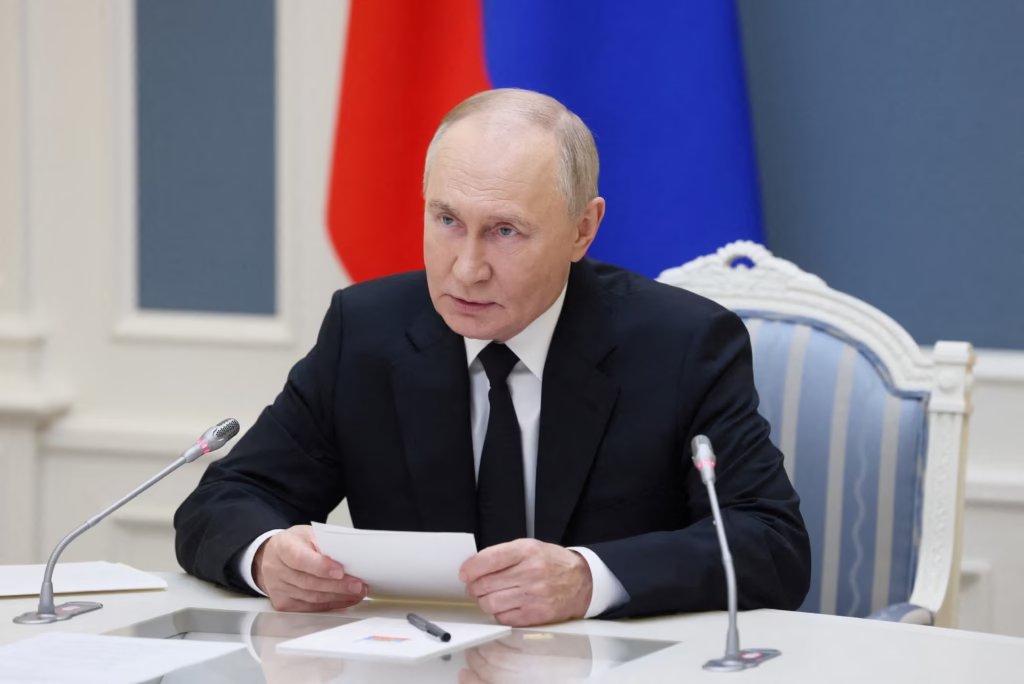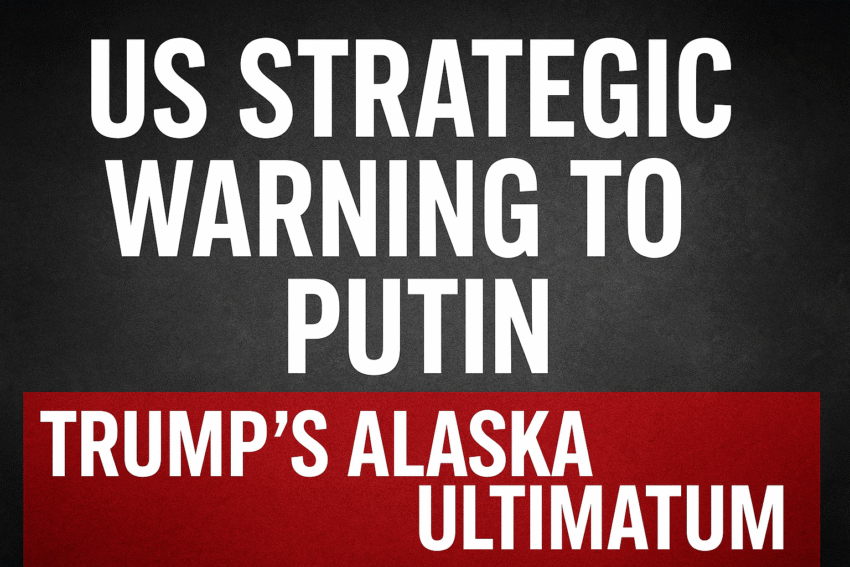
Backdrop to the Alaska Summit
On August 15, 2025, U.S. President Donald Trump is set to meet Russian President Vladimir Putin in Anchorage, Alaska — their first face-to-face summit since 2019 Wikipedia. The meeting comes at a critical juncture in the nearly four-year-long war in Ukraine, with global attention fixed on whether it will pave the way for peace or escalate tensions.
In the days leading up to the summit, Trump engaged in virtual consultations with European leaders and Ukrainian President Volodymyr Zelenskyy, portraying these talks as highly constructive The Wall Street JournalThe Times of India. Europe, representing key NATO allies, insisted on a ceasefire, denial of land concessions, and participation by Kyiv in negotiations. The backdrop set the stage for what could become a decisive diplomatic moment.
Trump’s Stark Warning
In a pointed message to Putin, Trump declared that if Russia doesn’t agree to a ceasefire at the Alaska summit, it will face “very severe consequences”, though he declined to specify what measures those might be The Economic TimesThe Times of IndiaPBS. Delivered after a televised ceremony at the Kennedy Center, the statement sent shockwaves through diplomatic corridors.
Trump framed the summit not as a peace agreement, but as a “feel-out meeting” to gauge Putin’s willingness to accept a temporary ceasefire — a precursor to broader talks involving Ukraine Republic WorldWikipedia. By issuing a US strategic warning to Putin, Trump elevated the encounter’s stakes, making it clear that failure could trigger further sanctions, arms support for Ukraine, or other escalating measures The Wall Street JournalMarketWatch.
This calibrated ambiguity — warning without commitment — functions as leverage. It aims to force candid negotiation, while holding back specifics until Putin’s response becomes evident.
European and Ukrainian Stakeholders Weigh In
Before the summit, European leaders including German Chancellor Friedrich Merz and French President Emmanuel Macron connected with Trump to ensure that Ukraine’s interests wouldn’t be sidelined. Merz reaffirmed that “fundamental European and Ukrainian security interests must be protected,” and a ceasefire should be the immediate focus Daily SabahABC7 Los AngelesThe Wall Street Journal.
Macron confirmed that Trump agreed any territorial negotiations must involve Kyiv — “territories belonging to Ukraine cannot be negotiated” without Ukrainians’ consent Daily SabahThe Wall Street Journal. A follow-up trilateral peace summit, which would include Zelenskyy, was also proposed if the initial talks go well The Wall Street JournalThe Times of India.
Zelenskyy himself remained cautiously optimistic but warned that Putin might be bluffing about his interest in ending the war The Times of IndiaThe Guardian. The pre-summit alignment indicates Europe and Ukraine are steering strategy, even if they’re not at the table in-person initially.
Summit Structure & Follow-up Plans
As framed by Trump, the Alaska meeting is a preliminary diplomatic engagement — a platform to assess intentions rather than strike a deal Republic WorldWikipedia. Should the summit show promise, a follow-up meeting involving Putin, Trump, and Zelenskyy may be arranged in a neutral European venue The Wall Street JournalDaily Sabah.
This dual‐stage design affords flexibility: Alaskan “feel-out” sets the groundwork; a trilateral summit could consolidate understandings. For Ukraine and its allies, insisting on Kyiv’s participation in subsequent talks is vital to preserving sovereignty and ensuring that any agreement includes effective security guarantees The Wall Street JournalThe Guardian.
The US strategic warning to Putin, thus, serves not just as pre-summit pressure, but as a message: global scrutiny will follow and outcomes will face consequences.
Strategic Implications & Risks
The issuance of a US strategic warning to Putin underscores the geopolitical tightrope being walked. On one hand, Trump projects deterrence—elevating pressure for a ceasefire. On the other, ambiguity leaves Russia room to maneuver, raising concerns among NATO allies about possible concessions.
For Ukraine, the risk is of being sidelined in early talks. Delhi and European capitals fear that unilateral compromise could embolden Russia without accountability. Trump’s warning, however, signals that the U.S. remains willing to steer talks toward its priorities, potentially safeguarding Ukrainian sovereignty if enforced credibly The Wall Street JournalThe Economic Times.
There’s also risk of miscalculation. If Putin perceives the warning as bluster, he may call the bluff, continuing aggression. Conversely, Trump could be forced into punitive action — sanctions or arms deals — that shift the conflict dynamics but escalate global tension.
Market Responses & Global Repercussions
Financial markets are already reacting to the summit’s potential fallout. If the Alaska meeting yields constructive outcomes, easing sanctions could lead to increased Russian oil exports — lowering global energy prices MarketWatch. Conversely, failure or renewed hostilities could spark fresh sanctions on not just Russia, but also entities doing business with it, leading to tighter energy markets and volatile crude pricing.
Beyond economics, the summit carries strategic weight: reaffirming U.S. leadership in global diplomacy, shaping Russia’s future posture, and testing alliances. Trump’s US strategic warning to Putin may thus become a landmark moment — judged as either a turning point or a diplomatic misfire depending on execution and follow-through.
Conclusion: The Stakes of the US Strategic Warning to Putin
The US Strategic Warning to Putin — repeated, firm, yet undetailed — captures the delicate diplomacy of this watershed moment. By signaling serious consequences, Trump is underscoring the gravity of action or inaction by Russia.
For Europe and Ukraine, it’s a signal of alignment — the U.S. is responsive, but not reckless. For global markets, it’s a period of high anticipation, where economic shifts hinge on political nuance. And for international diplomacy, the outcome will define whether Alaska becomes a prelude to peace or escalation.
As the world watches, the success of this strategy hinges on whether words are backed by action — and whether Putin, history, and diplomatic realism align under pressure.

